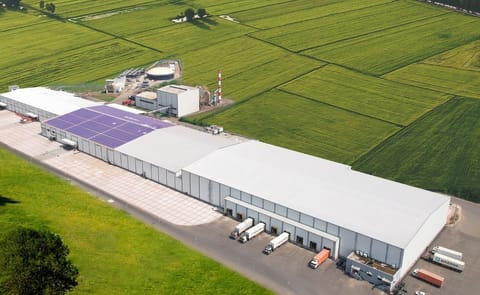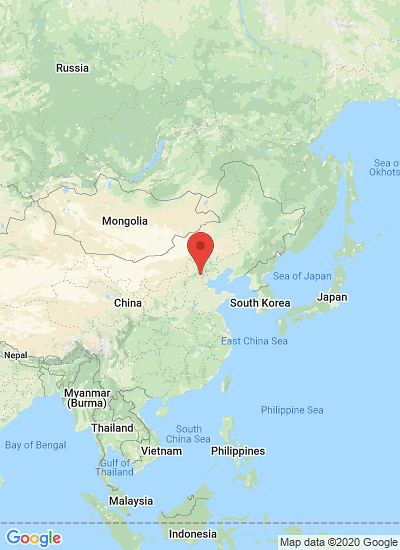Map of China's Four Potato Growing Zones
Solapas principales
Potato Production in China to rebound this marketing year
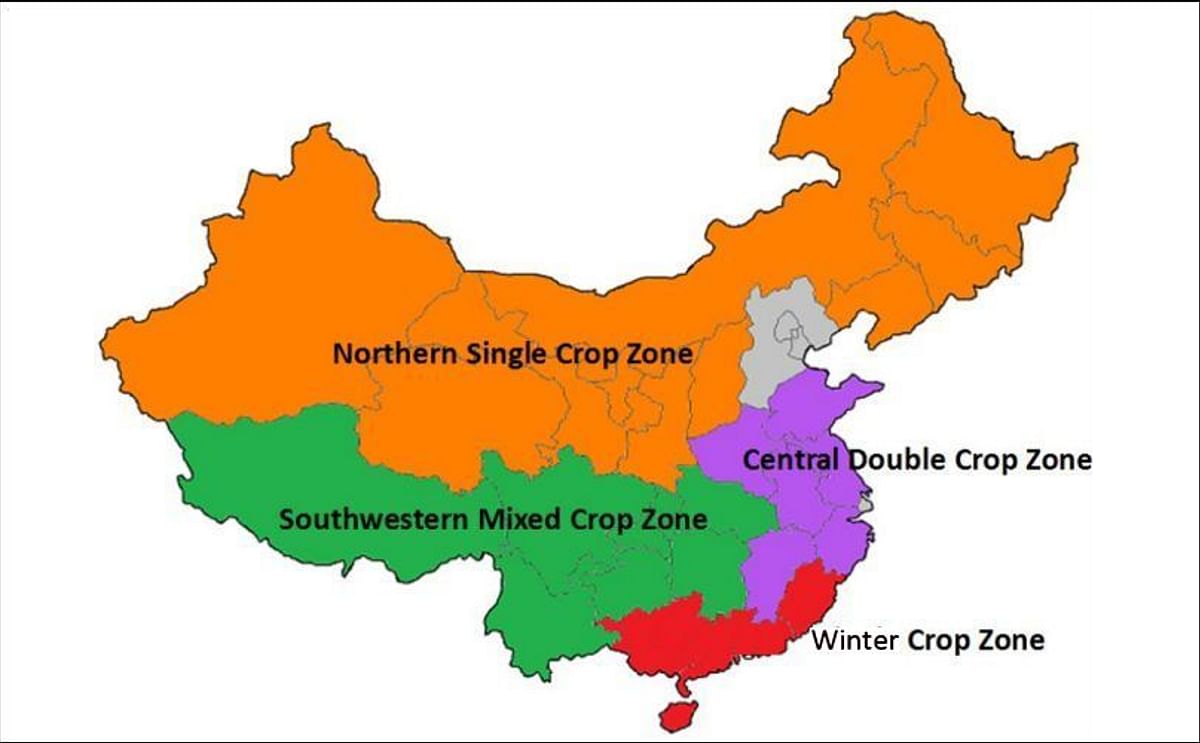
According to a GAIN-report prepared by the USDA staff in Beijing, China’s fresh potato production in marketing year 2017-2018 is forecast at 97 million metric tons, a five percent increase from the estimated 92 million metric tons in the previous year. The increase is attributed to a continued increase of the potato growing area.
China’s Frozen French Fries production is forecast at 250,000 MT, a 10 percent increase from 230,000 MT in MY2016/17, driven by strong domestic demand. Post forecasts China’s MY2017/18 FFF imports at 120,000 MT, about a 5 percent decrease from 126,620 MT in MY2016/17, due to increased domestic production.
The United States continues to dominate China’s Frozen French Fries import market.
Potato Production
Fresh Potatoes
As the largest potato producer in the world, China’s MY2017/18 fresh potato production is forecast at 97 million metric tons (MMT), due to an expansion of potato area. During the 2016/17 season, production was forecast to increase 3 percent to 100 MMT, but actually dropped 5 percent to an estimated 92 MMT. This decrease was due to continuing drought in the North and large-scale late blight occurrences in the Southwest.
However, due to a decline in corn area attributable to China’s recent corn reform and because 2017 spring potato prices were very high (the highest they have been in the last 8 years), industry sources report expanded potato area heading into the 2017 planting cycle.
China’s Four Potato Growing Zones
China has four main potato producing zones (see below). Sichuan, Gansu, Guizhou, Yunnan, and Inner Mongolia are the largest potato producing provinces in China, accounting for about 60 percent of China’s total fresh potato production.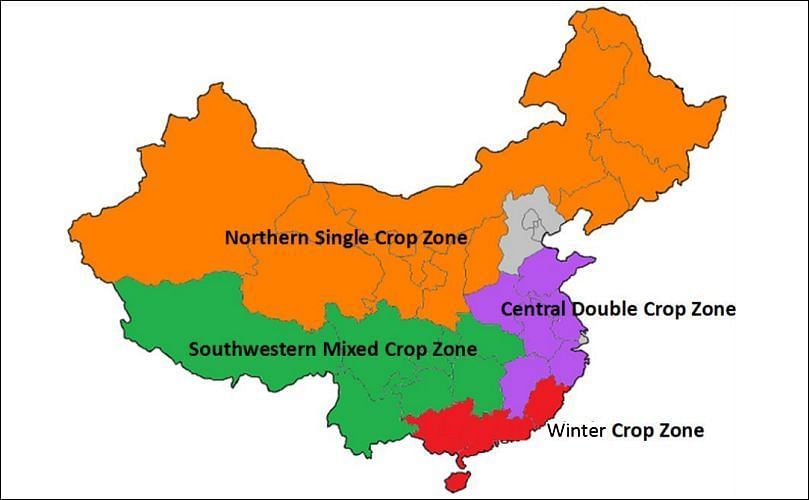
Map of China's Four Potato Growing Zones
- The northern single crop zone
This region accounts for 50 percent of China’s total potato area. The potatoes produced in this area are mainly used for seed potatoes, direct consumption, and processing.
Potatoes in this zone are usually planted in late April to early May and harvested from September through October.
This zone includes Heilongjiang, Jilin, Liaoning, Inner Mongolia, Gansu, Xinjiang, Qinghai, Ningxia, Shanxi, and Shaanxi provinces. - The southwestern mixed crop zone
This region accounts for 35 percent of China’s total potato acreage.
The potatoes produced in this area are mainly used for direct consumption. Potatoes in this zone are usually planted in September through November and harvested from February through April.
This zone includes Sichuan, Guizhou, Yunnan, Tibet, Chongqing, and parts of Hunan and Hubei provinces. - The central double crop zone
This region accounts for 10 percent of total acreage. Spring potatoes are planted in February through March and harvested during May or June. Autumn potatoes are planted in July through August and harvested in October through November.
The potatoes produced in this area are mainly destined for export and direct consumption.
This zone includes Jiangxi, Jiangsu, Zhejiang, Anhui, Shandong and Henan provinces. - The winter crop zone
This region accounts for 5 percent of total area. Potatoes produced in this zone are planted in October through November and harvested in February through March.
The potatoes produced in this area are mainly for export and direct consumption.
This zone includes Guangdong, Fujian, Guangxi, and Hainan provinces.
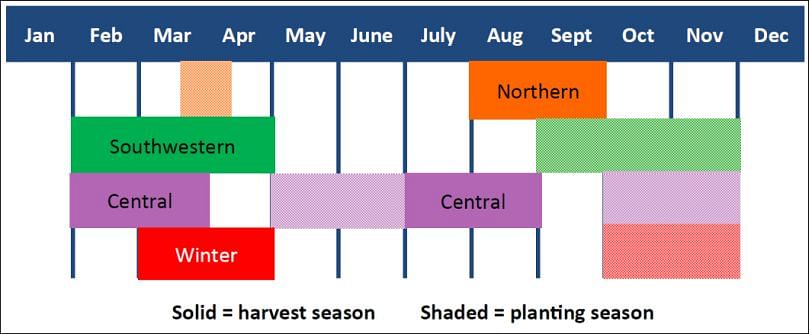
China's Potato Planting and Harvesting Seasons by crop zone
Processed Potatoes
Processing potatoes account for about 15 to 20 percent of total production, and include such products as starch, dehydrated potatoes, chips, and frozen french fries. According to industry sources, many potato processing machines only run from mid-August to late March due to the limited supply of suitable fresh potatoes and inadequate storage facilities.
Many potato processing factories are located in China’s Northeast, i.e. the northern single crop zone, where potatoes are harvested from September to October.
The potatoes produced in other zones are generally not suitable for processing. As a result, China’s processing potato supply is very limited between March and August.
Potato Starch
China’s MY2017/18 potato starch production is forecast at 540,000 MT, about a 20 percent increase from 450,000 MT in MY2016/17, as a result of larger fresh potato production.
MY2016/17 potato starch production was much lower than expected due to the limited fresh potato supply. In 2016, it was reported that bad weather conditions in major potato producing areas, such as Gansu and Inner Mongolia resulted in yield reductions and price increases.
According to China’s Ministry of Agriculture (MOA), the average potato price in 2016 was 2.4 RMB/kg (US$0.17/lb), about a 13 percent increase from 2015.
On September 16, 2017, China's Ministry of Commerce extended the countervailing duties levied on potato starch imported from the EU for another five years. Potato starch imports from the EU are subject to countervailing duties ranging from 7.5 to 12.4 percent.
The countervailing duty is not the only duty that applies to EU potato starch exports to China. The countervailing duty is in addition to an antidumping duty ranging from 12.6% to 56.7%, dating back to August 2006.
The anti-dumping duty is up for review in February 2018.
Potato Chips
China’s potato chip production continues to grow in response to strong market demand. Industry sources estimate China’s MY2017/18 sliced potato chip and fabricated potato chip production at 450,000 MT and 350,000 MT, a 7 percent and 13 percent year on year increase, respectively.
Frozen French Fries
China’s marketing year (MY) 2017/18 Frozen French Fries production is forecast at 250,000 MT, a 10 percent increase from 230,000 MT in MY2016/17.
China’s Frozen French Fries production has been increasing steadily in recent years, driven by increasing domestic demand from fast food restaurants and convenience stores.
Frozen French Fries production has strict fresh potato requirements, such as shape, starch content, sugar content, and color. Therefore, processors usually contract with farmers to produce potatoes which meet certain quality conditions.
Policy
In 2015, MOA announced its intentions to make potatoes the country’s fourth “staple grain” (after rice, wheat, and corn). Despite the release of a document in 2016 entitled, “Suggestions for Promoting the Development of the Potato Industry,” industry sources report that minimal changes have been implemented.
Consumption
Consumption of potatoes and use
The majority of China’s fresh potatoes are used for table consumption. Industry contacts estimate 60 percent of Chinese potatoes are consumed fresh in households and restaurants. The animal feed sector consumes about 20 percent, the processing sector consumes about 10 percent, seed potatoes are 4 percent, and losses due to storage account for about 5 percent. Industry sources believe the share of processing potatoes will increase in the long term following the increased development of potato products.
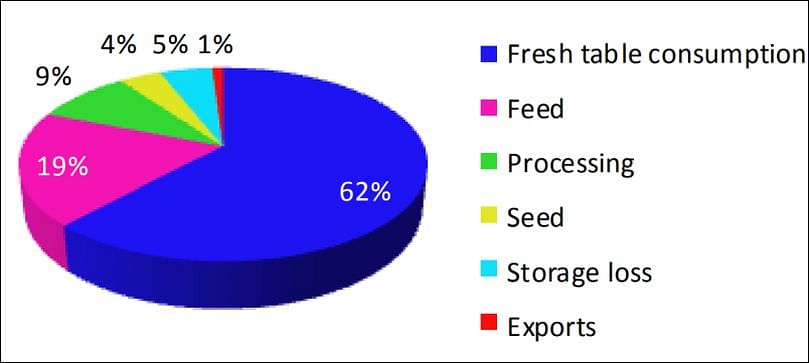
Use of Potatoes in China in 2017
Consumption Frozen french Fries
Industry contacts believe China’s Frozen French Fries consumption will continue to increase in the future at a moderate pace. Continued urbanization and the increasing number of fast food restaurants (the primary channel for Frozen French Fries), are major contributors to consumption growth. Industry sources also report that the sale of Frozen French Fries at convenience stores and supermarkets has increased rapidly in recent years with more and more Chinese consumers cooking Frozen French Fries at home as a result of food safety and health concerns.
Trade
Fresh Potato Imports
The Government of China does not allow market access for fresh potato imports from any suppliers due to Sanitary and PhytoSanitary concerns. US government agencies are working with their Chinese counterparts on negotiating market access of US chipping potatoes to China
Fresh Potato Exports
China’s exports of fresh potatoes have held stable at 300,000-500,000 MT annually since MY2010/11, a negligible amount considering China annual production of about 100 million MT. China’s MY2017/18 fresh potato exports are forecast at 550,000 MT, about 10 percent increase from the 497,829 MT in MY2016/17.
Industry believes China's “One Belt, One Road” policy will facilitate China’s fresh potato exports to its major fresh potato exporting countries, such as Malaysia, Vietnam, and Russia, which combined account for about 65 percent of China’s total fresh potato exports in MY2016/17.
Frozen French Fries Imports
The USDA Beijing office forecasts China’s MY2017/18 (September-August) Frozen French Fries Imports (H.S. Code: 20041000) at 120,000 MT, about a 5 percent decrease from the 126,620 MT in MY2016/17 due to higher domestic production.
The United States continues to dominate China’s Frozen French Fries Import market, with a 65 percent market share in MY2016/17, followed by Canada and Belgium, which together accounted for 22 percent of China’s Frozen French Fries Imports in MY2016/17.
Frozen French Fries Exports
China’s MY2017/18 Frozen French Fries exports are forecast at 10,000 MT, similar to the 10,397 MT in MY2016/17.
Japan continues to be the largest buyer of China’s Frozen French Fries, accounting for 68 percent of China’s total exports in MY2016/17.






